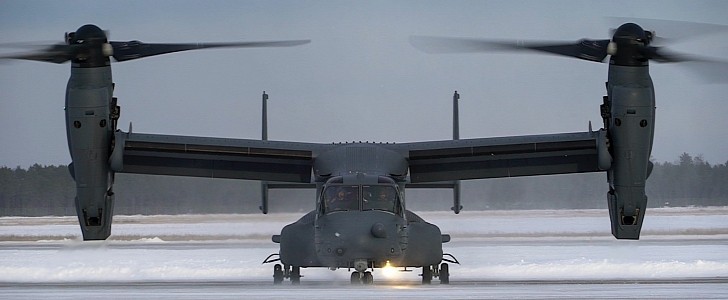Back in January, aviation company Bell announced it completed the first nacelle improvements on a CV-22 Osprey operated by the U.S. Air Force (USAF). It was the starting point for a process meant to make most of these incredible beasts ready for whatever the future of military operations will throw at them.
Three months later, Bell is hard at work upgrading the family of tiltrotors. Back in late March, for instance, the Amarillo Assembly Center received the third flying machine from the soldiers of the Cannon Air Force Base.
Cannon is from where Bell gets some of the real-time feedback into the modifications that need to be made. The goal is to bring the nacelles to a state from where they can increase flying time for the Osprey.
“For over a decade, the CV-22 has provided unique and unrivaled special operations capabilities to the joint force. We look forward to how the nacelle improvements will increase the Osprey’s readiness, making us even more prepared to face tomorrow’s security challenges,” said in a statement released this week, Lt Col Jonathan Ball, 20th Special Operations Squadron Commander at Cannon Air Force Base.
The nacelles are where the engines are located, and where all the magic happens. They are the pieces of hardware that allow the aircraft to take off and land vertically, like a helicopter, then transition to forward flight, moving just like a conventional airplane would.
It may not look like it, but the nacelles are the most complicated elements of the Osprey, and they account for 60 percent of maintenance work that needs to be performed on the CV-22 on a regular basis.
The upgrades being made, although secret for obvious reasons, involve some 1,300 new parts, and their fitting will improve “the wiring components within the nacelles and to change the structure.”
Cannon is from where Bell gets some of the real-time feedback into the modifications that need to be made. The goal is to bring the nacelles to a state from where they can increase flying time for the Osprey.
“For over a decade, the CV-22 has provided unique and unrivaled special operations capabilities to the joint force. We look forward to how the nacelle improvements will increase the Osprey’s readiness, making us even more prepared to face tomorrow’s security challenges,” said in a statement released this week, Lt Col Jonathan Ball, 20th Special Operations Squadron Commander at Cannon Air Force Base.
The nacelles are where the engines are located, and where all the magic happens. They are the pieces of hardware that allow the aircraft to take off and land vertically, like a helicopter, then transition to forward flight, moving just like a conventional airplane would.
It may not look like it, but the nacelles are the most complicated elements of the Osprey, and they account for 60 percent of maintenance work that needs to be performed on the CV-22 on a regular basis.
The upgrades being made, although secret for obvious reasons, involve some 1,300 new parts, and their fitting will improve “the wiring components within the nacelles and to change the structure.”











